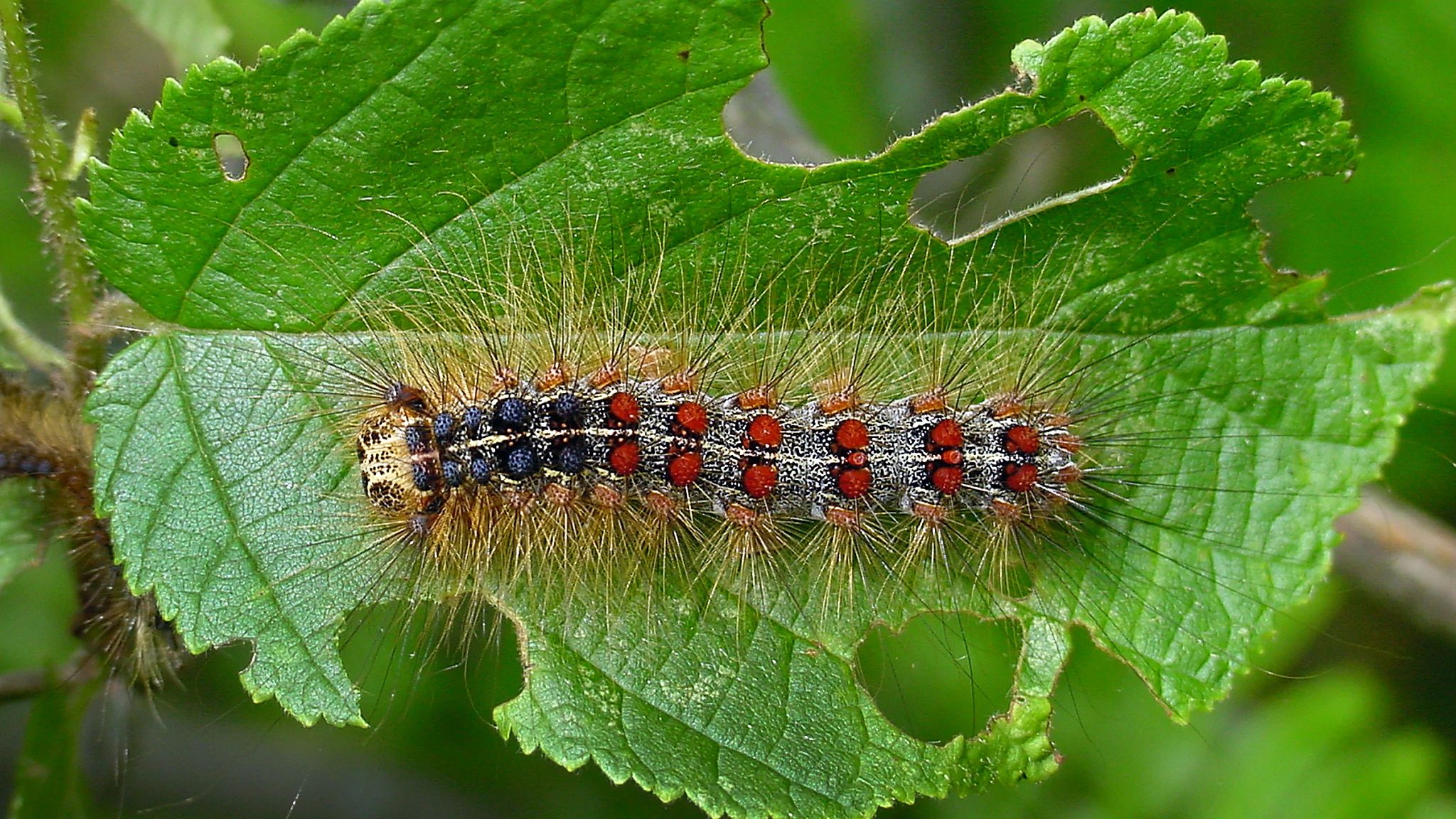Contact: Bill McNee, DNR Forest Health Specialist
bill.mcnee@wisconsin.gov or 920-360-0942
DNR Experts Warn Of A Bad Spongy Moth Summer
Pest Outbreak May Be Worst In More Than A Decade
 Spongy moth caterpillars feed on more than 300 species of deciduous and evergreen trees.
Photo credit: Wisconsin DNR
Spongy moth caterpillars feed on more than 300 species of deciduous and evergreen trees.
Photo credit: Wisconsin DNR
MADISON, Wis. – The Wisconsin Department of Natural Resources (DNR) warns the public that the next two months could bring the worst spongy moth caterpillar outbreak in more than a decade.
Invasive spongy moth caterpillars, formerly known as gypsy moth, strip trees of their leaves, potentially killing high-value trees. They prefer to feed on oak, birch, crabapple, aspen and willow leaves but will also feed on many other tree and shrub species.
Southern Wisconsin and parts of the north are already in a high-population outbreak that is predicted to continue and spread.
“Populations have remained high due to a low incidence of caterpillar-killing diseases last summer,” said Bill McNee, DNR Forest Health Specialist in Oshkosh. “In addition, weather conditions are favorable for the caterpillars and unfavorable for Entomophaga maimaiga, a fungus that kills spongy moth caterpillars.”
Property owners are encouraged to examine their trees and take action. Specifically:
- Visit the Wisconsin Spongy Moth Information Portal for information about managing spongy moth. Management options for the caterpillars include using burlap collection bands, physically destroying caterpillars and applying insecticide to protect trees and reduce nuisance caterpillar numbers.
- Learn how to use burlap collection bands. These are a non-pesticide option to help reduce populations when checked daily while large caterpillars are present.
- Insecticide treatments can be a suitable option for high-value host trees but are usually not practical for woodlots. Insecticide treatments are most effective when the caterpillars are small.
- Water yard trees weekly during dry periods to help reduce tree stress and aid a tree’s recovery from heavy leaf loss by the caterpillars.
- Wait to cut down any trees that have lost their leaves. Healthy hardwood trees usually produce a new set of leaves a few weeks later.
- Forest management may need to be postponed in forest stands with expansive leaf loss. Trees will be stressed from heavy leaf loss and often unable to handle the additional stress from forest thinning.
Those who find spongy moth caterpillars should avoid touching them as the hairs often cause a skin rash, welt or other irritation. Rubbing alcohol can help to remove the hairs and chemical irritants from skin that is exposed to the hairs.
Plan for insecticide treatments ahead of time to help secure an applicator and avoid a last-minute rush when pesticide application businesses may already be very busy. Resources for finding a qualified pesticide applicator include the Wisconsin Arborist Association, International Society of Arboriculture and a local phone book.
Stressed trees are already at an elevated risk of dying and will often die if they lose a lot of leaves in 2023. Low-vigor oak trees are likely to be infested by the native beetle, twolined chestnut borer, contributing to tree decline and death. Consult an arborist or forester for additional management recommendations.
Spongy moth populations may have a temporary, large increase in an area about every 10 years. Many areas currently experiencing a second or third year of the spongy moth outbreak will likely see a population decline or collapse due to diseases or starvation. Predicting where and when the decline will happen is difficult, and heavy leaf loss often occurs before the caterpillar population collapses.

